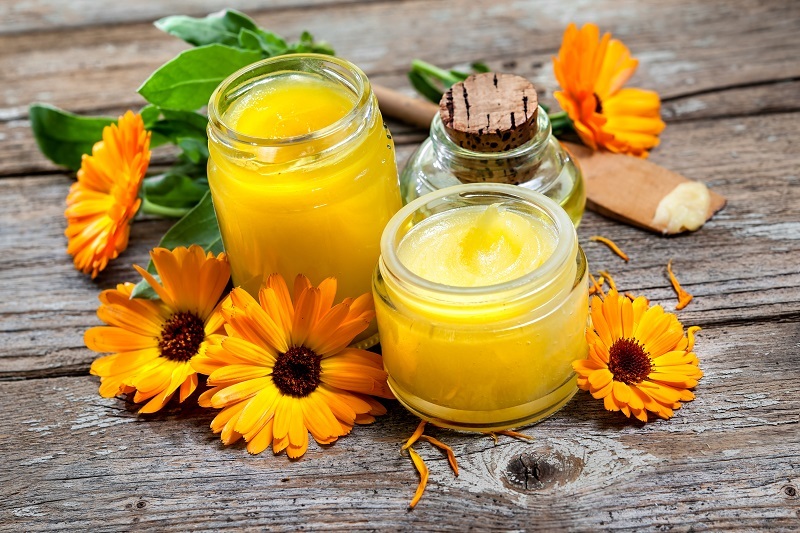Unlock the Secrets: 8 Intriguing Sunflower Facts
Posted on 30/08/2025
Unlock the Secrets: 8 Intriguing Sunflower Facts
Sunflowers are far more than just beautiful, towering blooms that brighten up vast meadows and home gardens alike. These iconic flowers are steeped in history, science, and surprising natural phenomena. Whether you're a gardener, nature lover, or simply enamored by these golden giants, uncovering the lesser-known mysteries of sunflowers will boost your appreciation for them. In this comprehensive guide, let's unlock the secrets and explore eight of the most fascinating facts about sunflowers that will captivate your imagination and enrich your understanding of this incredible plant.

1. Sunflowers are Actually Made Up of Thousands of Tiny Flowers
Many people think of a sunflower as a single, large flower. In reality, what appears to be one vibrant blossom is actually an aggregate flower head composed of thousands of tiny individual flowers called florets. The outer 'petals'--what we see as the bold yellow rays--are sterile ray florets. At the center is a dense spiral disk packed with hundreds to thousands of tiny, pollen-rich disk florets, each of which can become a seed if pollinated.
- Ray florets: The bright 'petal' structures that encircle the sunflower's face, attracting pollinators.
- Disk florets: The miniature, tubular flowers at the core where pollination and seed formation occur.
This unique botanical design not only maximizes reproductive success but also makes the sunflower a thriving hub of biodiversity during blooming season.
2. Sunflowers and the Mystery of Helianthus
The scientific name for the sunflower, Helianthus annuus, comes from Greek: "helios" (sun) and "anthos" (flower). But sunflowers are more than just "sun flowers" by name--they're intricately linked to the sun itself.
- Sunflowers belong to the genus Helianthus, which includes more than 70 different species.
- The sunflower family is part of the larger Asteraceae family, which also includes daisies and asters.
The diversity of sunflower species ranges from wild, multi-branched types with smaller blooms to the single-stemmed domesticated giants that can reach breathtaking heights. This vast genus offers endless opportunities for botanists, gardeners, and flower enthusiasts alike.
3. Sunflowers "Follow" the Sun: The Phenomenon of Heliotropism
One of the most compelling--and widely cherished--sunflower facts is their ability to track the sun across the sky, a phenomenon called heliotropism. Young sunflowers, in their bud stage, display this unique behavior:
- During the day, the flower heads turn from east to west, following the movement of the sun.
- At night, they reset by turning back east, ready to greet the sunrise.
Why do sunflowers do this? Scientists believe this behavior helps maximize photosynthesis, ensuring the plant absorbs the most sunlight possible for rapid growth. Older, mature sunflowers usually stop this motion and face east permanently, which may help attract pollinators by providing a warmer landing spot each morning.
Heliotropism showcases the extraordinary adaptability of sunflowers and is a source of ongoing fascination for both researchers and flower admirers.
4. A Symbol Steeped in Culture, Art, and Spiritual Meaning
The symbolism of sunflowers spans continents and centuries. For many cultures, sunflowers represent happiness, loyalty, adoration, vitality, and harvest. Their radiant appearance has inspired myths, artistic masterpieces, and even spiritual rituals:
- Native Americans cultivated sunflowers over 4,500 years ago, not only for food but as a spiritual symbol of the sun's life-giving power.
- In Victorian flower language, gifting sunflowers signified admiration and loyalty.
- Van Gogh's famous "Sunflowers" paintings celebrated the bloom's vibrant beauty and became an enduring symbol of joy and creative passion.
- Across the world, sunflowers are used in religious festivals and harvest celebrations.
In modern times, sunflowers are also widely recognized as symbols of peace, hope, and positive change--proving that their powerful message is as enduring as their spectacular golden blooms.
5. Towering Giants: The Impressive Heights of Sunflowers
Do you know just how tall sunflowers can grow? Some varieties are record-setting giants of the plant kingdom! The common sunflower--Helianthus annuus--can reach up to 12 feet (3.6 meters), but some cultivars and record-breakers far surpass this height.
- The tallest sunflower on record grew to an astonishing 30 feet 1 inch (9.17 meters) in Germany, recorded in 2014!
- Certain varieties, such as the Russian Giant and Mammoth, are bred for their impressive vertical growth.
- Sunflower competitions are popular among gardeners hoping to cultivate the tallest sunflower in their community or country.
Such heights are a triumph of both genetics and environment. Rich soil, full sun, and regular watering can help home gardeners achieve remarkable results--bringing a literal tower of sunshine to your backyard.
6. Nutritional Powerhouses: Sunflower Seeds and Oil
While the sunflower stuns with its visual beauty, its real superpower lies in its seeds. Sunflower seeds are a nutritional gold mine--packed with protein, vitamins, and healthy fats. Here's what makes them so valuable:
- Rich in Vitamin E, an antioxidant that supports skin, eye, and immune health.
- Excellent source of plant-based protein and essential fatty acids.
- High in magnesium, selenium, and B vitamins, supporting heart and brain health.
- Sunflower oil, pressed from the seeds, is widely used in cooking thanks to its mild flavor and high smoking point.
- Sunflower seeds are enjoyed as snacks, salad toppings, and ingredients in multicuisine dishes globally.
In addition to human nutrition, sunflower byproducts are used as high-protein feed for livestock, maximizing the plant's value in agricultural cycles.
7. Sunflowers as Earth's Natural Cleaners: Phytoremediation
Perhaps one of the most fascinating sunflower facts is their use in environmental science. Sunflowers are powerful agents of phytoremediation--the use of plants to clean up contaminated soil, air, and water.
- Sunflowers have been planted at sites contaminated with heavy metals, such as Chernobyl and Fukushima, to absorb toxic substances like lead, arsenic, and radioactive isotopes.
- Through their root systems, sunflowers draw up polluting agents and store or break them down, reducing environmental hazards.
- Phytoremediation is a cost-effective, sustainable solution to many of today's pollution challenges.
Sunflowers' remarkable resilience and adaptability make them ideal partners in the global quest for a cleaner planet--earning them the nickname "nature's mop."
8. Sunflowers: Marvels of Mathematical Perfection
Many have admired the geometric beauty of sunflower heads, but few realize that the seemingly random arrangement of seeds is a dazzling example of mathematical artistry. Sunflowers' seed spirals follow the Fibonacci sequence, a pattern found throughout the natural world.
- Each seed is arranged at approximately 137.5 degrees from the previous one, resulting in intersecting spirals.
- This creates optimal packing for the maximum number of seeds--a design that ensures both stability and efficiency.
- Artists, architects, and mathematicians alike have marveled at this natural manifestation of the golden ratio.
The mathematical harmony of sunflowers symbolizes the awe-inspiring intersection between nature and science, serving as a constant reminder of the universe's inherent order.
Sunflowers in Everyday Life: Surprising Uses & Lasting Impact
Having explored these eight intriguing sunflower facts, it's clear that sunflowers are far more than mere garden ornaments. Their applications are as diverse as their habitats:
- Gardening Delight: Sunflowers provide shade, act as natural trellises for climbing plants, and attract pollinators like bees and butterflies.
- Agricultural Value: Fields of sunflowers yield essential products--oil, seeds, and animal feed--benefiting both farmers and consumers.
- Environmental Service: Their phytoremediation abilities make them a sustainable tool for ecological revitalization.
- Inspirational Symbol: Across history and art, sunflowers stand as radiant beacons of hope, renewal, and positivity.
Their influence even extends to eco-friendly industries, as sunflower fibers are sometimes used to make biodegradable packaging and biofuels.

Cultivating Your Own Sunflower Secrets
Now that you've discovered these sunflower secrets, why not try growing your very own at home? Here are a few expert tips to get you started:
- Choose a variety that matches your space and climate--some are bred for height, while others are compact and ideal for pots.
- Plant seeds in full sun and well-drained soil, giving each plant plenty of room to spread out.
- Water regularly and protect young seedlings from birds, which are as fond of sunflower seeds as we are!
- Harvest mature seeds by covering heads with mesh bags and allowing them to dry on the stalk before collecting.
Whether you're cultivating a field, a garden border, or a single pot, nurturing sunflowers brings a splash of sunshine and a touch of the extraordinary to any space. You'll be amazed to watch these natural wonders "track" the sun, grow with astounding speed, and draw local wildlife like a magnet.
Conclusion: Celebrate the Magic and Mystery of Sunflowers
As you can see, sunflowers are truly marvels of the natural world. Their mix of botanical brilliance, cultural significance, and practical utility sets them apart from any other blossom. By understanding their secrets-- from fertile florets and heliotropism to phytoremediation and Fibonacci spirals--you deepen your appreciation for the beauty and complexity they represent.
The next time you pass a field of sunflowers or spot one swaying gently in a garden, remember: there's far more to these remarkable blooms than meets the eye. Sunflowers inspire, nourish, sustain, and restore the earth--making them a cherished companion to both nature and humanity.
Let the secrets of sunflowers light up your curiosity and add a little extra sunshine to your day!







